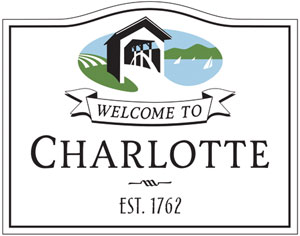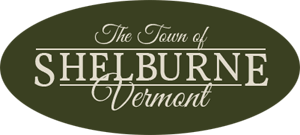European Frogbit
European Frogbit Removal program BACKGROUND
Aquatic invasive species (AIS) are expensive to control, costing town, state, and federal governments millions of dollars annually. AIS are easily spread between waterbodies via (but not limited to) fishing equipment, recreational equipment, and the transport of watercraft and their trailers. The spread of AIS is effectively minimized through education and outreach, equipment inspections, watercraft decontaminations, and community involvement. Without community involvement and volunteer support, the long-term management of AIS in the Lewis Creek, LaPlatte River, and direct-to-lake watersheds would be financially unsustainable.
European frogbit
One of these aquatic invasives that Lewis Creek Association has been managing for many years with the help of volunteers is European frogbit. European frogbit (Hydrocharis morsus-ranae) is native to Europe and Asia and was introduced to North America (Canada) in the 1930s. Frogbit forms thick mats in still to slow-moving water, reducing water oxygen and light levels and killing native plants and animals.
Town Farm Bay
Town Farm Bay is located in the southwest corner of Charlotte. At the eastern edge of Town Farm Bay, Thorp and Kimball Brooks enter into Lake Champlain and form a large and diverse wetland complex. This wetland provides valuable breeding habitat for over 41 species of birds, 11 species of fish, 10 species of amphibians and reptiles, and is home to several species of mammals. The Vermont Agency of Natural Resources, the Vermont Nature Conservancy, and the Town of Charlotte have recognized this wetland complex as a Vermont Natural Heritage site and premier wetland housing excellent examples of many natural communities. These wetlands of Town Farm Bay are particularly vulnerable to invasive plant introductions due to the high number of recreational fishing boats that access the area, potentially transporting invasive plant seeds and viable root matter. A population of exotic, invasive plants in Town Farm Bay wetland threatened to degrade the individual natural communities within the wetland complex and viability of the complex as a whole.
You can view the above presentation in PDF form, with notes attached, by downloading it here.
Volunteers load frogbit they have removed in Town Farm Bay, 2024. Photo credit: Portia Butrym.
Non-native invasive European frogbit was discovered in Town Farm Bay in the spring of 2007 along with three other invasive plants. Frogbit is a fast growing, free-floating plant that is often found among native water lillies. Frogbit can be characterized by its small, leathery, heart shaped leaves that are between 0.5-2.25” across. When in bloom frogbit produces white, 3-petalled flowers. Frogbit spreads rapidly and easily by horizontal runners (stolons). These stolons form clones of the “mother plant”. Frogbit is able to survive the winter by forming turions, which sink to the bottom of the lake or pond, and then rise to the surface in the spring, forming new plants. Therefore, it is extremely important to harvest frogbit before it’s able to form turions.
In 2009, a project team was assembled to remove frogbit from the bay. The first year, 7 tons of plant matter were pulled, reducing the bay from 50% to 45% frogbit cover. By year three, 42 total tons of plant matter were pulled, reducing the bay to less than 6% frogbit cover. Since 2011, volunteers pull frogbit each summer to maintain a small population, so native species can fully utilize the wetland habitat.
Lower LaPlatte River
In contrast, when frogbit was discovered in the wetlands of the LaPlatte Natural Area it had low percent coverage, providing an opportunity for “early detection, rapid response.” The LaPlatte River and marsh provide extremely important habitat for migratory waterfowl in an extremely fragmented landscape. The Nature Conservancy refers to the marsh as a riverside oasis for migratory birds in Shelburne. The LaPlatte River Marsh, like other marshes, is essential to filter and clean the water that flows from the LaPlatte headwaters into Lake Champlain. A survey was completed of the extent of the frogbit infestation in the lower LaPlatte River and a report and map was produced and presented to the Town of Shelburne in 2011. LCA volunteer frogbit removal efforts began in 2012.
Since this time, with the help of our many volunteers and funding from the towns of Charlotte and Shelburne, LCA has been able to keep populations of European frogbit in check at both Town Farm Bay and the Lower LaPlatte. Though the invasive plant will never be eradicated in either location, maintaining this low population allows native plants and animals to thrive. Together with volunteers, we have removed 31.7 tons (63,356 lbs) of frogbit from Town Farm Bay and 8.5 tons (16,960 lbs) of frogbit from the Lower LaPlatte. We removed an additional 35 tons (70,000 lbs) during the first two years of our removal efforts from Town Farm Bay. You can see the results of these volunteer efforts in the charts below.
Our frogbit removal volunteer program continues to run annually in June and July at both Town Farm Bay and the Lower LaPlatte River. Contact Sara Lovitz, sara@lewiscreek.org or 488-5295, to sign up to help out! We provide all the equipment, and you provide a few hours of your time to weed on the water.
Additional Resources:
Volunteers picking frogbit. Photo by Matt Gorton
BMPs for Composting Frogbit
Map of Management Zones - Town Farm Bay
Map of Management Zones - Lower LaPlatte
Town Farm Bay Management Plan
2011 Town Farm Bay Report
VT DEC’s Gallery of Invaders
Seasonal REports
2024 Report, Charlotte & Shelburne
2023 Report, Charlotte & Shelburne
2022 Report, Charlotte & Shelburne
2021 Report, Charlotte & Shelburne
2020 Report, Charlotte & Shelburne
The ongoing volunteer removal efforts are currently funded through the towns of Charlotte and Shelburne.








